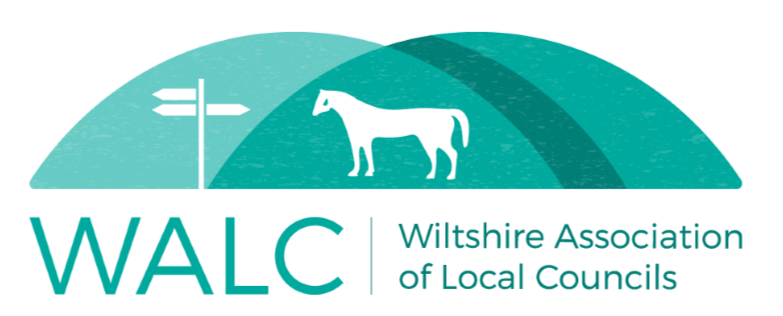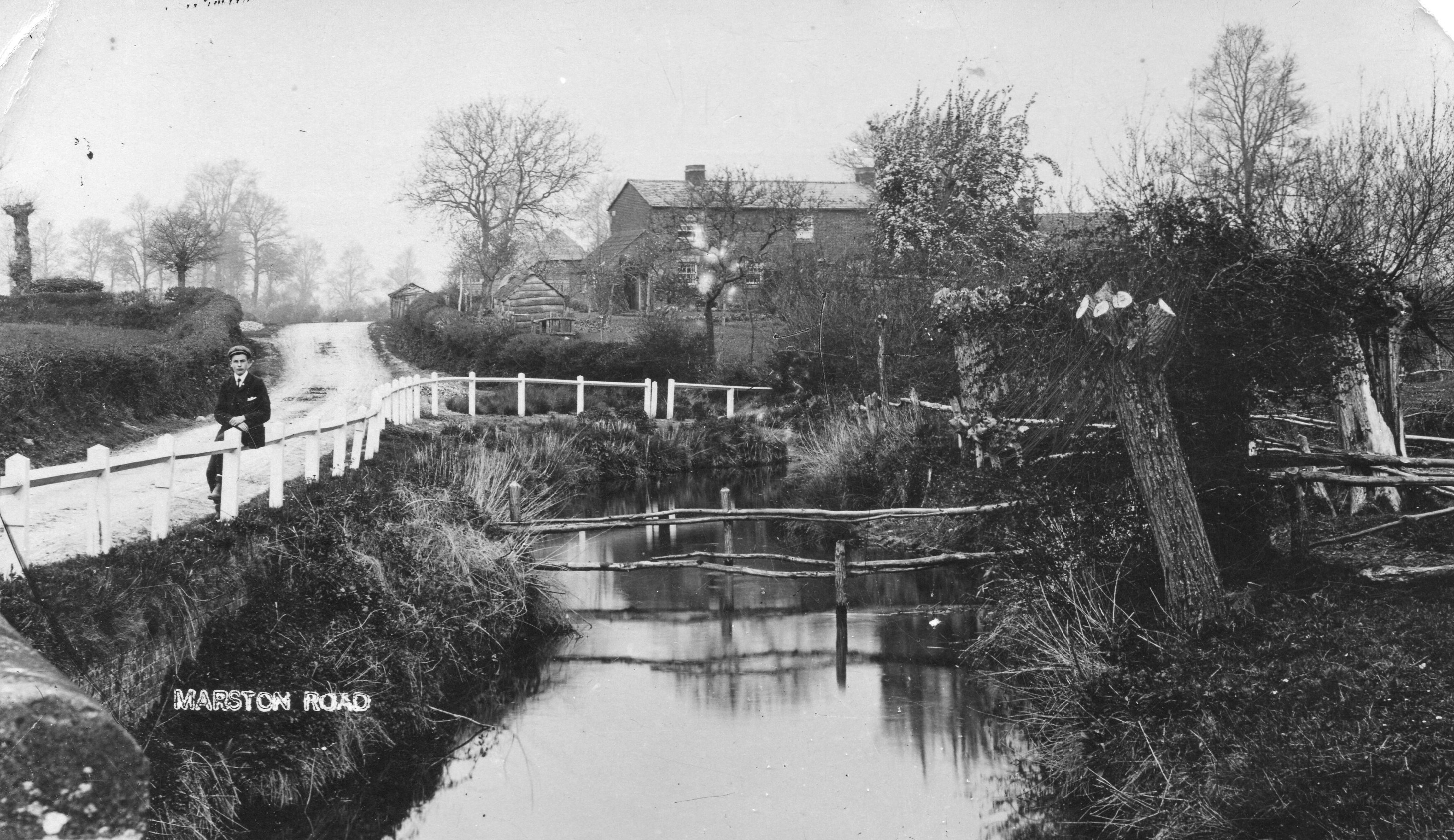Called Merstone in 1309, derived from a Saxon name mersctun (marsh settlement). In the early 1600s Potterne Manorial Court asked the Inhabitants of Marston to repair the ditch known as ‘le gripp‘ leading from Marston to Bulkington. The villagers were also told not to let their pigs roam in the lanes of Marston.
1646 saw Potterne and Marston grievously visited by the plague. A survey of the Manor of Potterne carried out by John May in 1656 shows many houses in Marston that have long since disappeared. A similar map, dated a year later, clearly shows the cobblestone path which probably joined up with a causeway that came from Potterne. The bridge leading from Worton to Marston called Raw Bridge was in 1740 out of repair and dangerous to travellers and the Marston Supervisors of the Highway were asked to make repairs within two months. These Supervisors or Surveyors of the Highways were responsible for the upkeep of the lanes, bridges and drains in the parish. Their account books make fascinating reading and in those days labour was one shilling per day.
Between 1815 and 1830 George Watson-Taylor was building up the Erlestoke Estate and by the time the Wiltshire Tithe Apportionment was agreed in 1841, there were 33 landowners in Marston. The main owners being: George Watson-Taylor (405 acres), Valentine Hale Mairis (107 acres) and Martha May (63 acres). Marston had 525 acres of meadow, 320 acres of arable land and 26 acres that were lanes etc.
By 1835 the Chapel had been built (Primitive Methodists in those days) and by 1841 Christ Church had also been built after £1200 had been raised mainly by subscription.
Most of the houses that had been built in Marston prior to the end of the 19th century were built from bricks made from local clay, the majority of which would have come from local brickworks either on the outskirts of Worton or at Stoke’s Marsh, Coulston. The latter probably belonged to the Watson-Taylors, their bricks being bigger than most, perhaps to reduce the brick tax paid?
The first Parish Meeting for Marston was held on 4th December 1894 and Charles Frederick Biggs was elected chairman. By June 1899 approval had been given to make a new road between Worton and Marston in place of the footpath and bridleway. Until then the Horse Road had been the main way through between the two villages.
In June 1910 much of the Erlestoke Estate was sold including most of the Watson-Taylor’s property in Marston. What remained was sold in 1920.
The Grip appeared to still be an important source of water in Marston in the 1920s,with much correspondence with the Ecclesiastical Commission in London regarding keeping it clean. The villagers depended on the water for domestic use, a ‘dipping place for water‘.
In her Memories from Childhood, Jean Carter tells of her life on a farm in the 1920s, and how very different it was from life today. Families were virtually self sufficient, the days were long and work was hard and manual. Pigs and chickens were kept for food and butter was made once a week. Haymaking was a very hard job with long hours as it was all done by hand and horses. The toilet was a little wooden house at the bottom of the garden and the only lighting in the home was oil lamps and candles. The children walked to school at Worton and although school life was very strict, at Christmas there was a party with presents. Saturday night was bath night, with the water coming from a well in the garden. Monday was washing day, Tuesday ironing day and on Wednesday the eggs had to be cleaned and counted ready to be taken to Devizes Market on Thursday.
Marston was known as Marston in the Mud, the lanes were very muddy as seven herds of cows were driven four times a day from farm to field or field to farm until the weather got too bad for pasture feeding.
In 1937 the Coronation of George 6th was celebrated with Worton and during the war years American soldiers were frequent visitors to the Plough Inn as they were stationed at Erlestoke Park. Italian prisoners of war worked on some of the farms in Marston and some families had evacuees from London.
After the War, the Parish Meeting continued to oversee Marston and deal with many local issues, including taking over the Green from the Church Commissioners, getting a telephone kiosk and in 1954 a Coronation seat.
In 1958 a Parish Council for Marston was established and in 1960 it was agreed to build a bus shelter. Times were changing in Marston and by April 1978 there was concern about the high level of soil round the Jubilee oak tree due to the Green improvements being done by Pearces. Unfortunately by 1984 the oak tree was dead and had been cut down.





